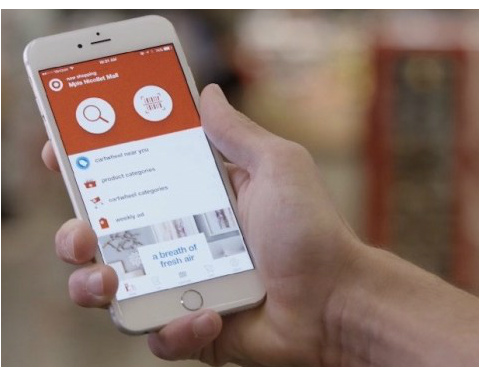Mobile vs online shopping 2018 trends show that more people are shopping on mobile devices, anytime of the day or night. And at times, men shoppers outnumber women.
Would you believe that nearly all—96 percent—of US adults who go online have also shopped online? And while it may not surprise you that most people now use multiple devices to shop, you might be shocked to hear that in the US at least, 35 percent of online shoppers now prefer to shop only on smartphones or tablets, while 18 percent still only shop on a PC or laptop.
Those US mobile shoppers don’t seem to have a favorite time of day to shop, but more people who shop on desktop or laptop computers like to do so between 6 and 9 in the evenings. Those findings are just some of what’s in a new mobile vs online shopping habits report from audience measurement company Verto Analytics.
Online shopping habits are also different across age and gender. While we all know that women shop a lot more than men, there are actually more men shopping online in the early hours of the morning, from 2 to 5am, according to the report.
What age group shops online the most? It’s not so surprising that Gen X (ages 35-54) shops online more than any other adult group, with 35 percent shopping online. They edge out 19-34 year-old millennial shoppers (30 percent), 55-74 year-old baby boomers (31 percent), and seniors over 75 (5 percent). Many Gen X’ers have more money to spend than web-savvy millennials, but Gen X’ers are still more comfortable online than older people.
 Perhaps because many millennials are savvier and quicker with apps and websites, they didn’t spend as much time per month shopping online as other age groups in the Verto study. By contrast older shoppers visited or used an online shopping site or app for 27 days over the course of a 30-day month, which is means they shopped nearly every day.
Perhaps because many millennials are savvier and quicker with apps and websites, they didn’t spend as much time per month shopping online as other age groups in the Verto study. By contrast older shoppers visited or used an online shopping site or app for 27 days over the course of a 30-day month, which is means they shopped nearly every day.
In the US at least, Verto generalizes the average online “super shopper” as a 47 year-old woman with a household income under $50,000 who spends 44 hours per month (yes, that’s nearly two whole days) shopping online, spending the majority of her time on Amazon, eBay, Walmart, and Craigslist.
Online shopping 2018 trends
With the explosion in online shopping habits fueled by mobile devices and social media ads, retailers are tapping into e-commerce sales now more than ever before. The National Retail Federation projects online retail sales will grow 10 to 12 percent in 2018, and the value of goods sold online in 2018 is estimated to reach $460 billion in the US alone, according to a recent analysis from Statista.
 Another interesting fact from the Verto report is that online shoppers visit retail websites and shopping apps at different times during the day and week. Target, for example, gets a boost in online and app traffic on Sundays, but it still doesn’t outrank Amazon, which dominates US online shopping throughout the day.
Another interesting fact from the Verto report is that online shoppers visit retail websites and shopping apps at different times during the day and week. Target, for example, gets a boost in online and app traffic on Sundays, but it still doesn’t outrank Amazon, which dominates US online shopping throughout the day.
This shows that more people are squeezing their shopping sessions into other online activities and apps as they move between devices and screens, says Verto.
Because online shopping has become so integrated with other tasks, it’s all the more important for brands and advertisers to accurately identify their target audience, says Verto CEO Hannu Verkasalo. “With behavior dependent on factors such as age, gender, income, time and day of the week,” he says, “e-commerce apps and web services are in a heated race to capture consumer attention and influence their path-to-purchase to avoid the dreaded abandoned shopping cart.”
Mobile vs online shopping paths to purchase
More interesting facts from the mobile vs online shopping 2018 report findings:
Overall, study participants spent more time shopping online in the evening, but the shopping sessions on average lasted longer in the mornings, especially during 8 to 10am. And when it comes to multitasking—a session during which at least four different apps are used with at least seven different shifts (from app to app)—the average shopping device session includes six distinct apps.
Certain apps are being used before and after other shopping apps (i.e. using Amazon and Target) in 23 percent of all shopping device sessions that occur on PCs, smartphones, and tablets. Social media and communications apps are used before and after shopping apps nearly 20 percent of the time. Specifically, Google, Amazon, and Facebook are the top three apps used before and after shopping apps. The presence of Amazon indicates almost all US online shoppers are using Amazon in every online shopping session, says Verto.
How the study was carried out
Insights into online shopping trends and habits can help advertisers, brands, and marketers identify touchpoints, refine messaging tactics, and optimize the customer experience. In its study, Verto Analytics says it used a “single-source, passive measurement methodology” that measured shoppers’ behavior from the point of consumer interaction across all platforms, media, content, and devices.
The study tracked and analyzed the online shopping behavior of a paid market research panel of US consumers aged 18 and above during the busiest online shopping month of December, 2017. Participants were compensated based on their demographics and opt-in to install a measurement app on their digital devices.
You can download Verto Analytics’ mobile vs online shopping 2018 report “The E-Commerce Ecosystem: The State of Cross-Device Digital Shopping” for free here. The company is a “Best of 2017” Mobile Star Awards Winner in the Mobile Intelligence Innovator category. Learn more here about Verto’s mobile audience measurement tools.
Trending in this story: mobile vs online shopping 2018, US online shopping trends, US online shopping habits, US online shopping behavior





